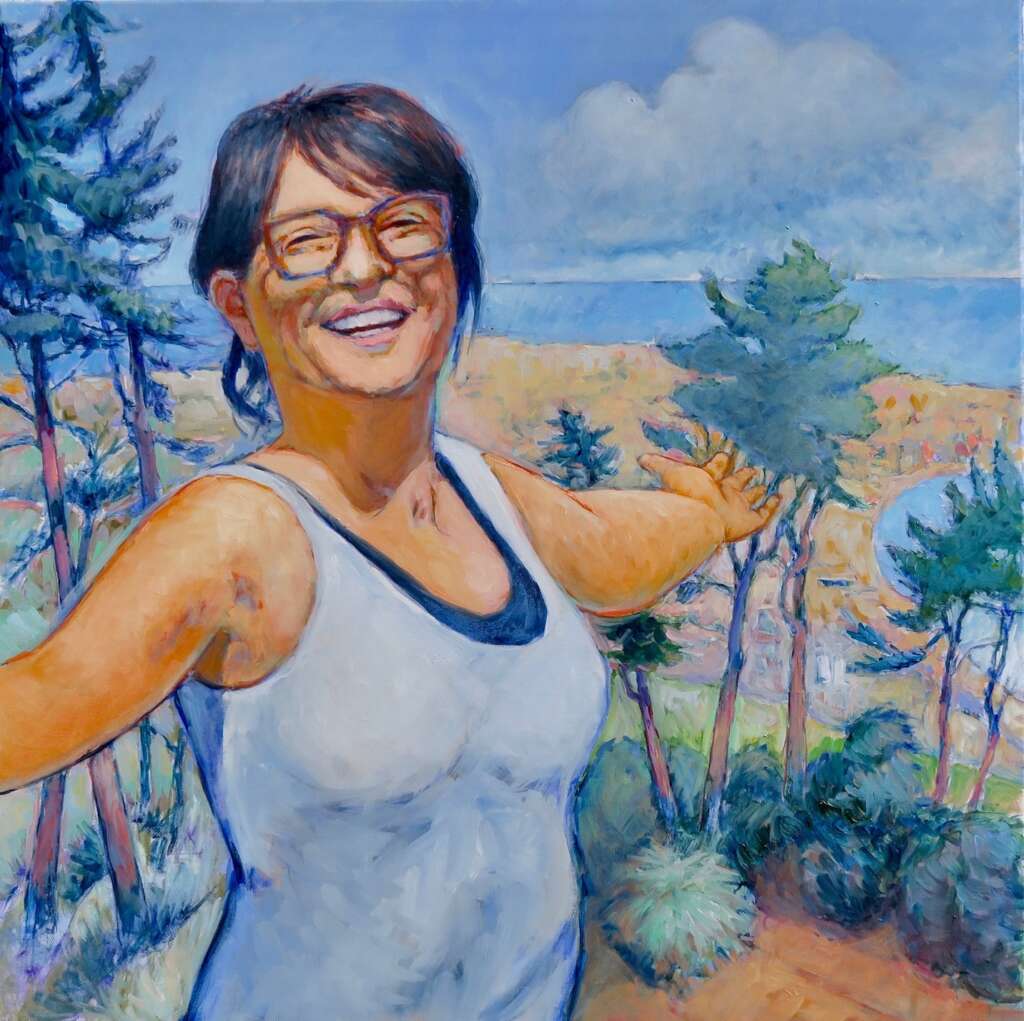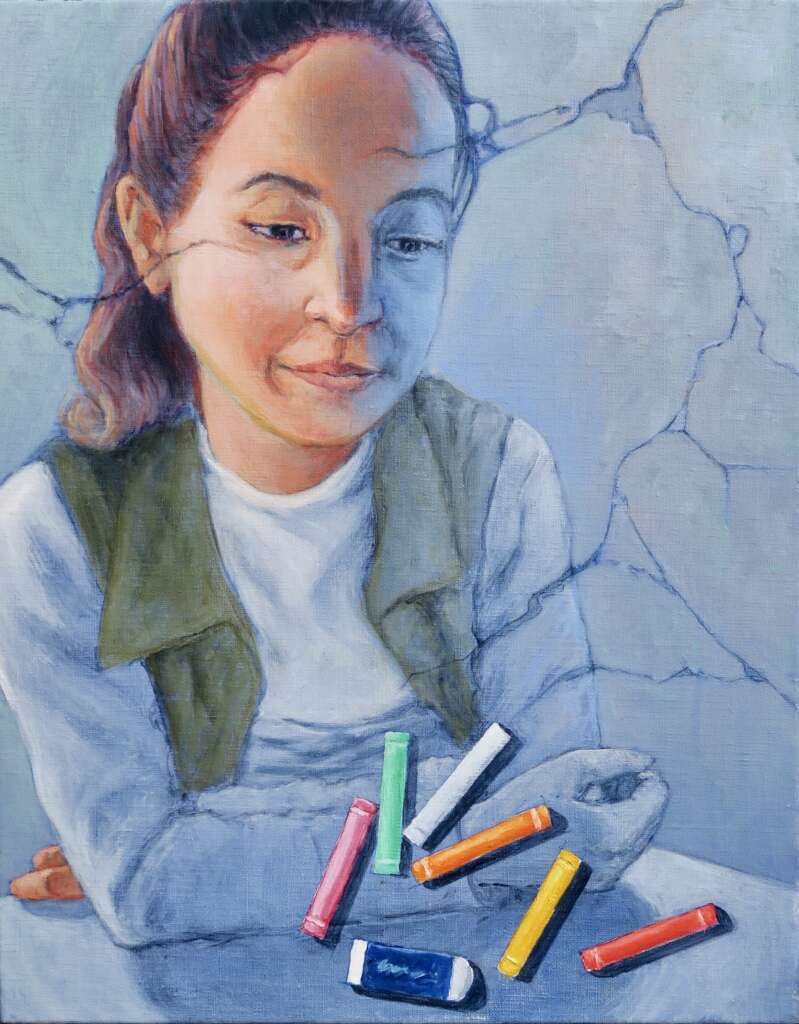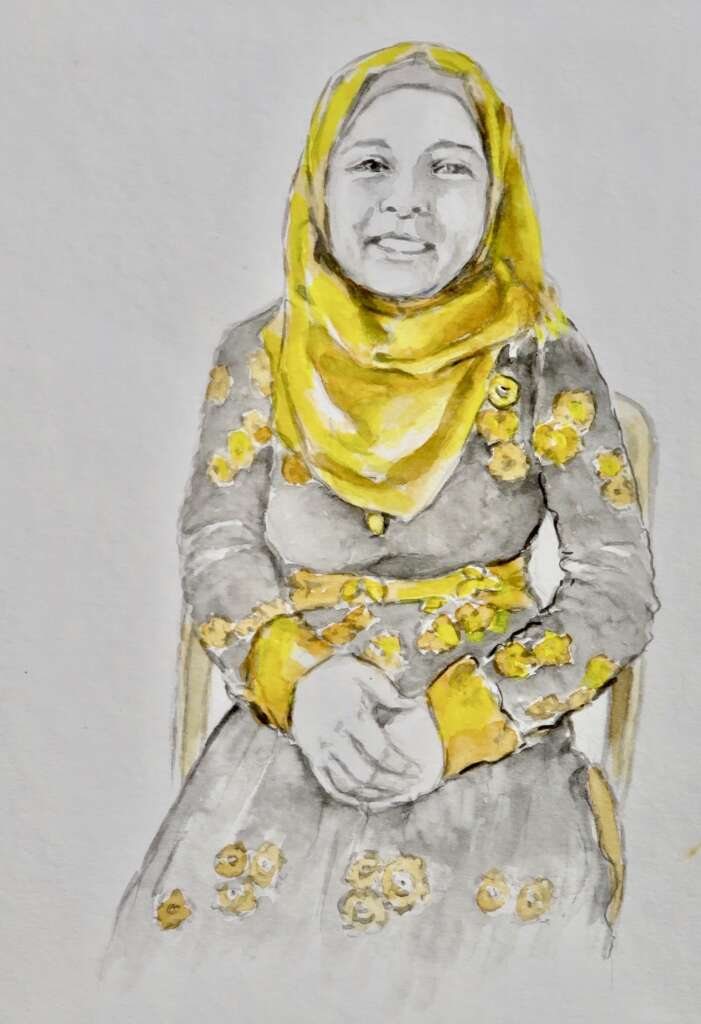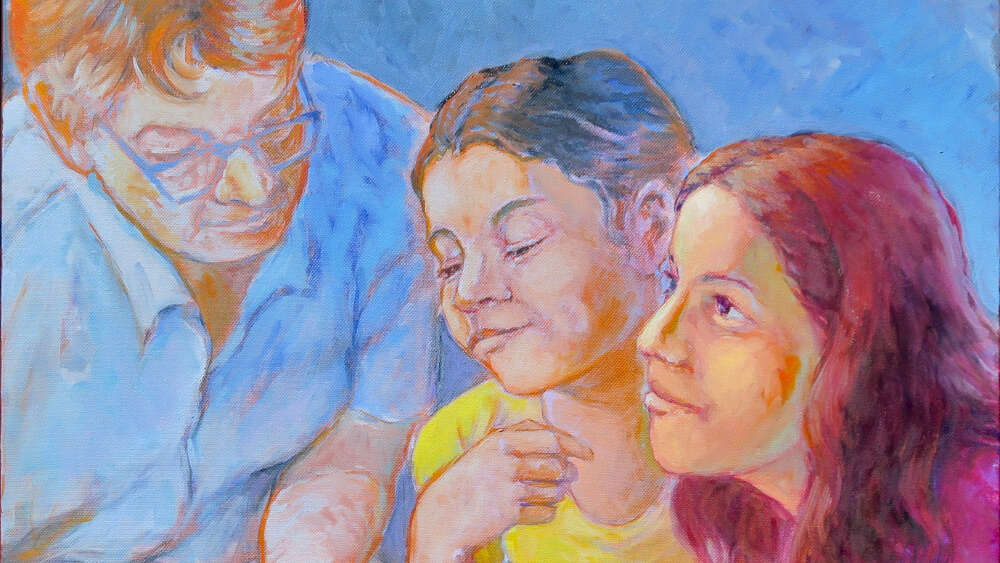In a shipping container in Lebanon’s Beqaa Valley – just 15 minutes from the border of war-torn Syria – Australian artist Ian McGilvray is conducting art lessons.
His pupils are young girls – Syrian refugees who live in tents or underneath corrugated-iron shanties dotted throughout the nearby farmland.
“We just fell in love with these young people. They had come from places like Raqqa, Idlib, Homs and Aleppo, which had been destroyed really. For many [the education program they were in] was their first contact with Christians because most were from Muslim backgrounds,” McGilvray tells Eternity about this life-changing trip in October, 2019.
The young Syrian refugees he taught there are among the subjects of McGilvray’s art exhibition “Drawn Together“, which runs from March 18-29 at Katoomba’s Gallery ONE88 in the Blue Mountains, New South Wales.
McGilvray’s trip to Zahle in eastern Lebanon was with his wife Jill (chair of Langham Partnership Australia Committee), while she took part in meetings about Langham’s work in equipping Bible teachers across the world.
The pair stayed with friends Riad Kassis, director of Langham Scholars, and his wife Izdihar Kassis, who started Together For the Family, the program for Syrian refugees in which Ian found himself teaching art.
They are stateless. Many do not have any source of income and the children do not have access to formal education.
The families in the program are among the 1.5 million Syrians who have fled to Lebanon during the past 11 years that civil war has raged in their homeland. They do not have official refugee status in Lebanon, as this tiny country of only four million – also greatly burdened by its own problems – struggles to cope with the influx of Syrians across it borders.
And so they are stateless. Many do not have any source of income and the children do not have access to formal education.
McGilvray unravels more about the desperate situation of these refugees and the origins of Izdihar’s ministry: “She and a friend were walking one day in their neighbourhood, and they saw a tent in between houses. She thought that was odd, and then they heard a baby crying inside. So they looked inside, and there was no mother.”
“The mother came back after a little while and Izdihar said to her, ‘What’s the story?’ And she said, ‘Well I can’t feed my baby. I’m a refugee and I’ve got nothing.’
“Izdihar took it to heart and got some volunteers and said, ‘Well, we’ve got to feed these babies and provide nappies for them, at least in their first year of life. So what later started was Together for the Family ministry for Syrian refugees, which grew from there.”
Today, in addition to giving food, medical assistance and counselling to mothers and babies, the organisation provides early childhood education, particularly for children with disabilities. It also runs vocational training for young women, with classes in sewing and in hair and beauty training, as well as training in woodwork and metalwork for boys – all from shipping containers.

Izdihar Kassis, painted by Ian McGilvray Ian McGilvray
McGilvray’s “Drawn Together” exhibition – which will raise funds for Together For the Family – is a somewhat surprising outcome of his 2019 trip. He hadn’t intended to teach art there or to even to paint anything particular about this experience.
“We walk in [to the girls’ sewing training program] the first day and this young woman with shiny eyes caught our attention,” McGilvray recalls.
“So Jill could help with the sewing and I’m thinking, ‘Well, I’m a waste of space because I can’t speak Arabic. I can’t do anything.’ So I just sat down and this lady was sitting in front of me. And I said to her, ‘Do you mind if I just draw your face?’ And she said, ‘That’s all right.’ So I picked up an old envelope and I drew her and gave it to her.
“And then suddenly her friends came over and I found myself drawing quite a few of these young ones. I guess this was a way of making some sort [of] affirmation that I felt for the situation that they were in.
“Then that led to a couple of days of little drawing classes, where we’d sit around a table and I’d get them to draw each other.
“I’d help them a little bit with the proportions, and also [to] learn how they drew each other and what they saw.”
“I was just so deeply impressed with their resilience.” – Ian McGilvray
While McGilvray says he only “got to know these young girls a little bit”, they impacted him in a profound way.
“I was just so deeply impressed with their resilience – these people who had seen things that no young person should ever see. They’ve got a totally uncertain future. Many had been in those makeshift camps for five years.”
Jill took photos of many of the girls and others involved in Together For the Family so that Ian might paint them upon his return to Australia.
“I wasn’t even thinking about an exhibition. I was just so moved by them, I suppose, that I wanted to do some portraits,” he explains.
“I started with watercolour, thinking ‘What’s the simplest and most direct way to capture some of their vitality and the freshness of these people?’
“So the initial work was quite simple and small. Then as time went on, I wanted to paint a bit more of the layers that were happening in their life. And so I put some fabric imagery into the paintings because they were sewing and working with fabric. Also in the Islamic world, fabric and pattern is a motif of universality.
“Then in some of the paintings I wanted to make reference to danger that these people were in. I didn’t want it to be sweet and saccharine; I wanted to say these are beautiful young people but they’re on the edge. Their beauty is fragile, Their beauty is at risk from chaos.”
McGilvray represented this fragility by painting cracks into the background of the paintings and across the subjects’ faces, as seen in one of his favourite pieces in the exhibition – a portrait of a young woman he dubbed “quiet girl”.

Painting of ‘quiet girl’ by Ian McGilvray Ian McGilvray
However, he stresses that he did not want to “paint these people as victims”.
“I don’t want to sentimentalise them and I don’t want them to be victims. I don’t want to put them on a pedestal, you know; they are cheeky and muck around like any kids. But I did want to honour them – that was the word that kept coming back to me. How can I honour them, their dignity, their resolve and the compelling, engaging beauty that they had, and a sense of hope? I wanted to honour that sense of hope that I saw in them, in circumstances that I’m pretty sure would have crushed me.”
This hope is portrayed in another of McGilvray’s favourites – his portrait of “yellow girl.”

‘Yellow girl’ painted by Ian McGilvray Ian McGilvray
When asked where the hope of these refugees comes from, McGilvray notes that it’s partly in-built.
“In some Syrian and Lebanese people, there is a great resourcefulness and initiative in their culture,” he says, noting that many spoke about their hope to return to Syria one day.
However, he also credits the Christian love shown to them by Together For the Family for “putting hope into their hearts”.
“Some are coming to know Jesus. Through an interpreter, one woman said that Jesus came to her in a dream … and a number of others are also becoming followers of Jesus …”
“So, I think hope was operating spiritually, it was operating physically. It was something also in their cultural background. And in all of that, we could sense that God was doing something amongst them.”
As a Christian artist who aims to “be a person of hope, being moved and informed by the Spirit of God”, McGilvray hopes his exhibition will inspire viewers.
Firstly, on a “political front”, he hopes to draw attention to the ongoing plight of Syrian refugees.
McGilvray also wants to highlight these refugees as examples of humanity’s God-given beauty.
“I want to share with some people in Australia that these people are courageous and God’s hand is upon them, even in a terrible situation,” he says.
“I hope they’ll see that, even though these are people on the other side of the world in a different cultural context, there is a beauty and resilience in people. When you strip away every support of a person – security, finance, peace – there’s still a God-given grace that we’ve got to be part of.
“There’s a beauty and a resilience in people that is a precious gift of God. That beauty, which is fragile, is something that we’ve got to learn from.”
Add to Calendar
Drawn Together – An Exhibition by Ian McGilvey




